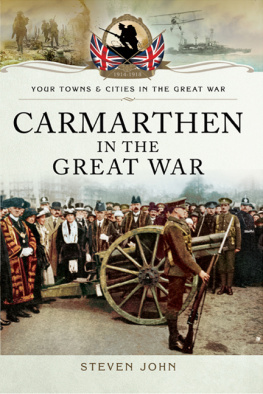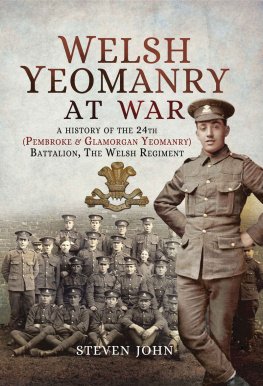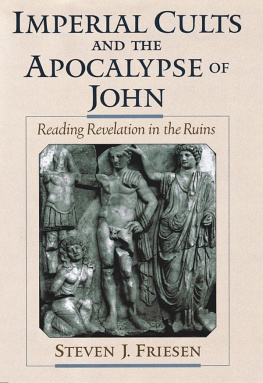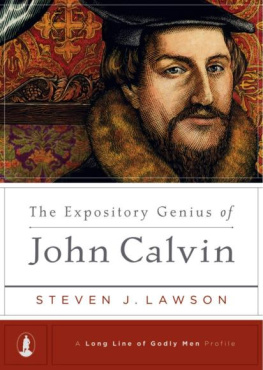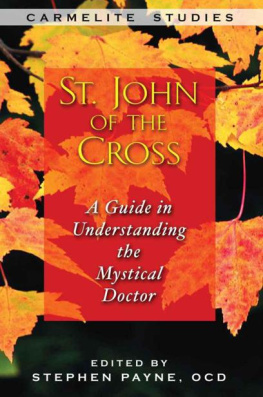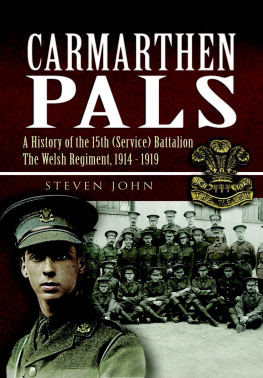Steven John - Carmarthen in the Great War
Here you can read online Steven John - Carmarthen in the Great War full text of the book (entire story) in english for free. Download pdf and epub, get meaning, cover and reviews about this ebook. year: 2014, publisher: PenSword, genre: Non-fiction. Description of the work, (preface) as well as reviews are available. Best literature library LitArk.com created for fans of good reading and offers a wide selection of genres:
Romance novel
Science fiction
Adventure
Detective
Science
History
Home and family
Prose
Art
Politics
Computer
Non-fiction
Religion
Business
Children
Humor
Choose a favorite category and find really read worthwhile books. Enjoy immersion in the world of imagination, feel the emotions of the characters or learn something new for yourself, make an fascinating discovery.
- Book:Carmarthen in the Great War
- Author:
- Publisher:PenSword
- Genre:
- Year:2014
- Rating:4 / 5
- Favourites:Add to favourites
- Your mark:
- 80
- 1
- 2
- 3
- 4
- 5
Carmarthen in the Great War: summary, description and annotation
We offer to read an annotation, description, summary or preface (depends on what the author of the book "Carmarthen in the Great War" wrote himself). If you haven't found the necessary information about the book — write in the comments, we will try to find it.
Steven John: author's other books
Who wrote Carmarthen in the Great War? Find out the surname, the name of the author of the book and a list of all author's works by series.
Carmarthen in the Great War — read online for free the complete book (whole text) full work
Below is the text of the book, divided by pages. System saving the place of the last page read, allows you to conveniently read the book "Carmarthen in the Great War" online for free, without having to search again every time where you left off. Put a bookmark, and you can go to the page where you finished reading at any time.
Font size:
Interval:
Bookmark:


First published in Great Britain in 2014 by
PEN & SWORD MILITARY
an imprint of
Pen and Sword Books Ltd
47 Church Street
Barnsley
South Yorkshire S70 2AS
Copyright Steven John, 2014
ISBN 978 1 78303 645 5
eISBN 9781473838253
The right of Steven David John to be identified as the author of this work has been asserted by him in accordance with the Copyright, Designs and Patents Act 1988.
A CIP record for this book is available from the British Library
All rights reserved. No part of this book may be reproduced or transmitted in any formor by any means, electronic or mechanical including photocopying, recording or by any information storage and retrieval system, without permission from the Publisher in writing.
Printed and bound in England
by CPI Group (UK) Ltd, Croydon, CR0 4YY
Typeset in Times New Roman
Pen & Sword Books Ltd incorporates the imprints of Pen & Sword Archaeology, Atlas, Aviation, Battleground, Discovery, Family History, History, Maritime, Military, Naval, Politics, Railways, Select, Social History, Transport, True Crime, and Claymore Press, Frontline Books, Leo Cooper, Praetorian Press, RememberWhen, Seaforth Publishing andWharncliffe.
For a complete list of Pen and Sword titles please contact
Pen and Sword Books Limited
47 Church Street, Barnsley, South Yorkshire, S70 2AS, England
E-mail: enquiries@pen-and-sword.co.uk
Website: www.pen-and-sword.co.uk
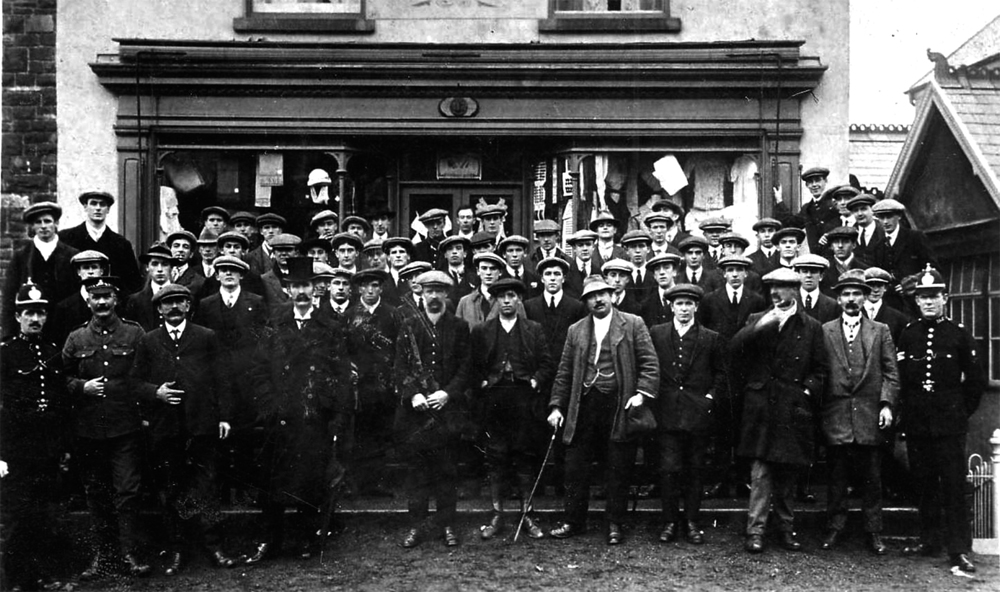
Recruitment Party by York House, Pontyberem, c. August 1914.
THIS BOOK CONTAINS just a fragment of the local Great War research which the author has carried out over the last ten years, mainly based around researching the war memorials of the three counties of Carmarthenshire, Ceredigion and Pembrokeshire. Most of this work has been published on a website which covers the memorials of these counties, but another large portion of research has been carried out on the Welsh Regiment, especially the 15th (Service) Battalion, Welsh Regiment, the Carmarthenshire Battalion, and the 24th Battalion, Welsh Regiment. Some of this work has been published by Pen and Sword under the title Carmarthen Pals, the authors history of the 15th Welsh.
It is not an easy task to acknowledge every source of help which I have received over the years, but special thanks must go to the following, for the provision of information and advice: Pen and Sword, especially Roni Wilkinson and Henry Wilson for giving me the opportunity to write this book, and to Nigel Cave for his much valued editing and patience with my amateur writings; The National Library of Wales for access to its period newspaper archives; Mark Collins, for his scans from the Llanelli Library Archives, and his in-depth knowledge of the 4th Welsh; Carmarthen Library, for its help with the Carmarthen Journal archives; The National Library of Wales, which holds an impressive archive of newspapers; The Commonwealth War Graves Commission; Les Nixon, my man on the ground in west Wales, for his continued support and advice; Mike Davies, for the photographs of Elydyr Lewis; and the many other individuals who continue to provide photographs and information through the contact form on the website.
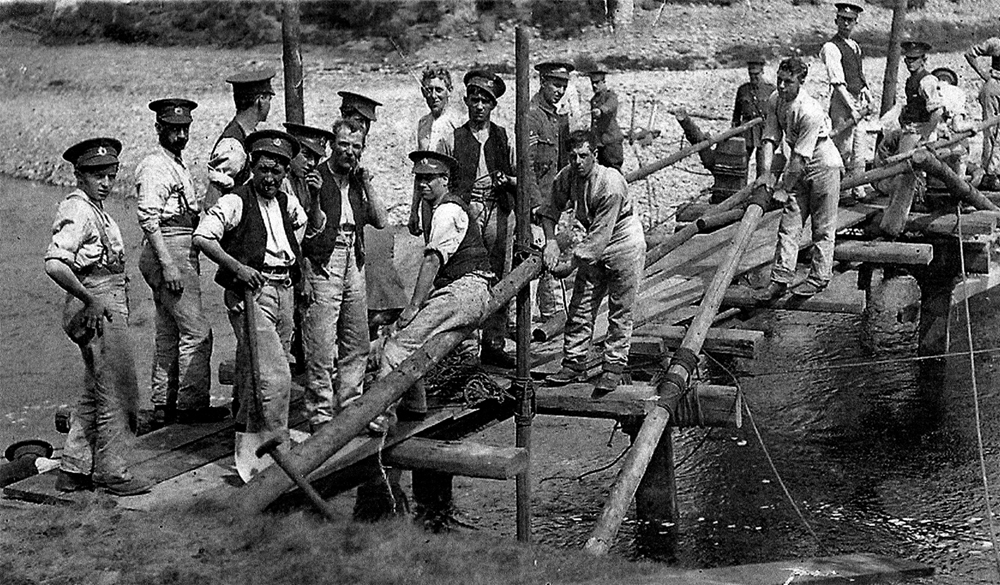
Some men of the Carmarthen Section of the Welsh Field Company, Royal Engineers at Bedford.
CARMARTHENSHIRE IS A rural county sat on the Atlantic coast in south-west Wales. Carmarthen is the county town, situated on the upper navigable reaches of the River Towy. Known in Welsh as Caerfyrddin, which roughly translates as Merlins Fort, it is the home to the wizard Merlin of Arthurian legend.
Following the Acts of Union, Carmarthen became the judicial headquarters of the Court of Great Sessions for south-west Wales. During the sixteenth and seventeenth centuries the dominant business of Carmarthen was still agriculture and related trades, including the manufacture of woollen goods. However, in the mid-eighteenth century the iron and coal trades became much more important to the town. Although Carmarthen never developed ironworks on the scale of the valley towns of South Wales, or even such as the neighbouring town of Llanelli, which grew at a much faster rate during the Industrial Revolution, the town did have its own iron works and rolling mills, the product of which was shipped from Carmarthen Wharf.
Carmarthenshire itself comprises a wide spread of smaller rural towns and villages. The largest town in the county is in fact not Carmarthen itself, but industrial Llanelli, less than twenty miles east. Llanelli grew massively during the Industrial Revolution, with numerous coal mines in the surrounding area leading to a huge influx of workers. The rise of steel making also helped to secure the prosperity of Llanelli and it was also home to a thriving tinplate industry. Llanelli became such a significant producer of tin that it came to be known as Tinopolis. Heavy industry ensured that Llanelli contributed more men to the war effort than did Carmarthen; by looking at the statistics of men that died during the Great War, it appears that Llanelli contributed twice as many men as Carmarthen.
The Llanelly and Mynydd Mawr Railway linked the town to the neighbouring Gwendraeth Valley, an area renowned for its high quality anthracite coal mining, which was based on the towns of Cross Hands, Tumble, Trimsaran, Pontyberem, Pontyates and Kidwelly. The Gwendraeth Valley gains its name from two rivers, the Gwendraeth Fawr and Gwendraeth Fach. The River Gwendraeth has two almost equal branches, which converge at Carmarthen Bay. The Gwendraeth Fawr is the smaller of the two rivers [despite Fawr meaning large in Welsh] and has its source in a series of springs north of Cross Hands. The river flows through Pontyberem, Pont Henri and Pontyates and passes to the south of Kidwelly to enter the estuary. The Gwendraeth Fach [Welsh for small] flows from just north of Cross Hands, south of Llanddarog, Cwmisfael and Llangyndeyrn and turns southwards through Mynyddygarreg. It reaches the estuary to the west of Kidwelly after passing through the town centre.
By 1768 a canal was in operation to carry coal from local pits on the banks of the Gwendraeth Fawr to about half a mile to the west of Kidwelly. With the coming of the railways, notably the Mynydd Mawr Railway, the canal fell into disuse and the last recorded sailing bound for Llansteffan was in the early 1920s.
All of these towns were thriving coal mining communities, with Kidwelly also having a thriving tinplate industry and a large brickworks. Kidwelly was once one of the most powerful towns in Wales, with its mighty castle set in an imposing position overlooking the River Gwendraeth.
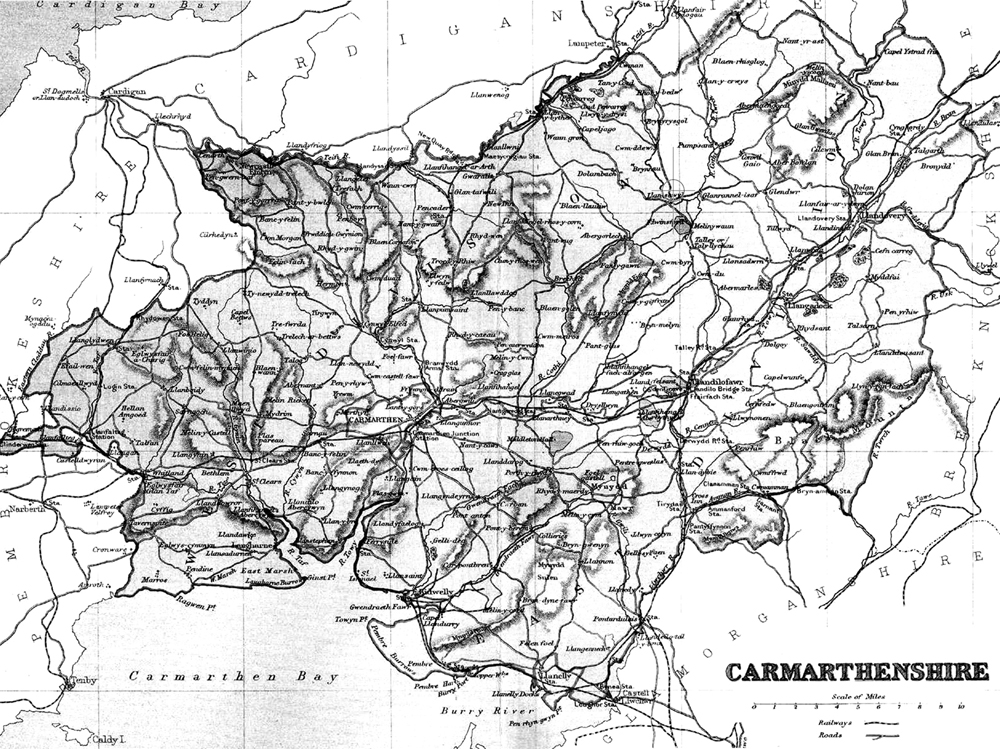
The two large towns of Carmarthen and Llanelli are surrounded by clusters of smaller towns and villages, one of the largest of which is Ammanford, another mining community in the Amman Valley, in the north of the County. The Amman Valley contributed strongly to the war effort in terms of men, as well as material in the form of the good quality steam coal and anthracite that was mined there and was essential for its use in powering industry and the mighty warships of the Royal Navy. The River Amman, which flows from the Black Mountains to the River Loughor at Pantyffynon, gives its name to the town of Ammanford and also the villages of Rosaman, Brynamman, Glanamman and Pontamman. The old village of Cwmamman has now become two villages, Garnant and Betws. In the nineteenth and early twentieth centuries the valley was a thriving coal-mining area, but the mines have now all closed. Ammanford came into being on 20 November 1880; its original name, Cross Inn, was rendered obsolete due to the rapid expansion of the village and partly due to the fact that there was another village of the same name in Carmarthenshire. The coming of the Industrial Revolution had created a great demand for coal and the first local railway was opened in 1840, linking Llanelli with Ammanford and later extending through Brynamman and Llandeilo to Shrewsbury. With ease of access and many local coal mines, the population increased massively, with migrant workers coming from all over Wales, as well as from England, Scotland and Ireland.
Font size:
Interval:
Bookmark:
Similar books «Carmarthen in the Great War»
Look at similar books to Carmarthen in the Great War. We have selected literature similar in name and meaning in the hope of providing readers with more options to find new, interesting, not yet read works.
Discussion, reviews of the book Carmarthen in the Great War and just readers' own opinions. Leave your comments, write what you think about the work, its meaning or the main characters. Specify what exactly you liked and what you didn't like, and why you think so.

